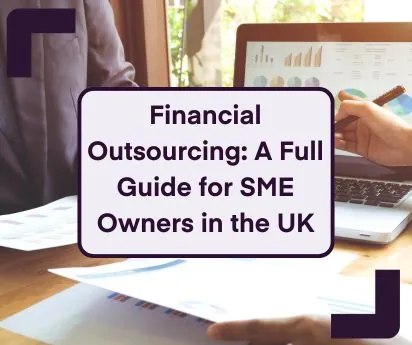
The new wave of SME lending
5 Aug 2020In the UK, there are 5.5 million small to medium enterprises (SME). This sector has seen a substantial amount of growth in recent years, and micro businesses and SMEs now make up a staggering 99% of private companies in the UK, leading to a new wave of SME lending.
Representing a third of the private sector workforce, small businesses account for 51% of private sector turnover with £1.9tn. This makes SMEs an extremely important part of the UK economy and workforce.
In fact, thought leaders across the globe are now suggesting that the SME market is the next wave of Fintech focus, with the UK treasury making moves to stimulate this new wave of innovation. Here we’ll look into the new wave of SME lending and banking services, and the future of small business financing.
The need for better lending options
With the huge growth of SMEs comes the need for better lending options for the sector, especially as banks have put forward stricter lending requirements that have deterred a number of small business owners from applying for funding.
Note: This is likely why there has been a reduction in approved loans year-on-year. According to UK Finance, there has been a 50% decrease in the number of overdrafts offered to small businesses by banks since 2011.
As the majority of small businesses are likely to be outside of banks’ risk appetite, they don’t have an incentive to deliver quality service to SMEs. Data from UK Finance revealed the average percentage of overdrafts acceptance rates comes to 82.6%, while business loans see an average acceptance rate of 69.1%.
Related: What is EIS? - alternative funding options for small businesses
Related: How do you loan money to your company?
Why now?
Challenges revolving around cash flow are common for small businesses. According to Xero, 50,000 businesses fail every year due to negative cash flow. Additionally, only 52% of UK small businesses were cash flow positive in June 2019. Small businesses need to have improved access to the capital necessary to fund growth, which will help boost the economy and productivity throughout the UK.
Note: There is also a lack of credit facilities in certain parts of the UK. In only the past three years, have been 700 combined bank closures throughout the North West of England and Yorkshire and the Humber.
FinTechs that focus on SME lending across the UK, such as iwoca and Esme Lending, play a pivotal role in helping small businesses get the funding needed to grow their business. Innovative products and services that allow entrepreneurs and small business owners to run their business and have fewer financial worries will greatly improve the sector.
Related: How your accountant can cure your cash flow problems
Related: How to do a cash flow forecast
Leading FinTechs for SME finance
The rise of more innovative SME lending businesses and services are opening up more opportunities for small businesses and making lending simpler. It’s worth noting that FinTechs can have more expensive rates for SME lending; however, they tend to make decisions much quicker, allowing businesses to also receive the loan faster. Below we talk about two of the leading FinTechs for SME lending.
-
iwoca
Having claim to 12% of all new business overdrafts, online lending startup iwoca has overtaken some of the biggest lenders, such as HSBC and Santander. The startup has made over £1bn of funding available to 50,000 SMEs needing funding of up to £200,000. As NACFB Lender of the Year and winner of the £10m Banking Competition grant, iwoca pledges to make £5bn of funding available to SMEs by 2023.
iwoca also has greatly reduced the amount of time it takes to make loan decisions and for the money to be deposited. Through the platform, loan decisions are made within hours. For iwoca’s Business Loan, there’s a 6% upfront fee and a representative APR of 14.9% per annum.
Christoph Rieche, iwoca’s CEO and co-founder, stated: “iwoca is the only SME lender in the UK with the scale, level of experience and technology to dramatically expand and transform access to finance for small businesses. Our proven track record of industry firsts includes integrating with eBay and Amazon, being the first business to offer a Lending API, and the first SME lender to integrate with OpenBanking.”
-
Esme Loans
Supported by NatWest, Esme Loans is a standalone digital lending platform for sole traders and SMEs looking to scale up their business. The platform offers a quick and paper-less process for businesses wanting to borrow between £10,000 and £250,000. Since the company’s launch, they have lent over £70m to UK SMEs. At Esme’s current trajectory, the lending provider is growing rapidly and expected to reach £100m before Christmas.
Note: Esme Loans are now being offered directly to NatWest’s SME customers. Additionally, the platform will provide alternative options for customers looking for quicker, unsecured business loans.
If an SME would like to borrow £50,000 over two years, an indicative example shows the monthly payment would be £2,286.99 and interest would come to £4,887.78. This is with a monthly rate of 0.76% and a representative APR of 9.51%.
Changes in the SME banking landscape
Before the financial crisis, SME banking was served predominantly by traditional banks and specialists, and business owners were often faced with endless paperwork, long waits, and strict criteria. This made it more challenging for SMEs to get financed.
Now, leading FinTechs have emerged, creating stronger competition and offering more options. FinTechs active in the business banking market offer services and products to address a range of targeted needs, and SME lending is a big part of that. Additionally, over 50 institutions have received a UK banking license since 2008, and many are focusing on SMEs.
Note: The leading banks still have a significant stronghold of SME banking. Business current accounts are especially popular, making up approximately 75% of the sector, but leading SME finance FinTechs are eroding their market share with easier, quicker, and simpler loan applications.
FinTechs are also likely to become even more popular as many SMEs experience issues with their bank to provide the services they need. According to a report by EY Financial Services, top barriers that keep small businesses from using high street banks for financing include the following:
-
Put off by bank
-
Assumed they’d get turned down
-
Challenging borrowing process including expense or hassle
As competition has increased and technology advances, some banks are redeveloping their products and offerings to help small businesses in order to keep their share in the market. With more SMEs likely to demand better services and products, a growing number of small businesses are looking for alternative finance sources to help them grow their business.
Related: Which challenger bank is best for businesses?
Related: 5 mistakes business owners make when looking for finance
The future of SME lending
Small businesses have unique needs and demands that aren’t being addressed by the traditional forms of lending and banking. And needs can become more complex as a small business grows.
Technology advancements are allowing better SME financing options to come forward. As small businesses account for the majority of UK businesses, traditional banks need to look to adapting their services and offerings for SMEs, and leading FinTechs have further room to grow their offerings.
Get referred by Accounts & Legal
Small businesses are four times more likely to be approved for funding with iwoca if referred by an accountant, according to the lending startup. If you’re a small or medium sized business owner looking to apply for SME lending, give us a call on 0207 043 4000.






















